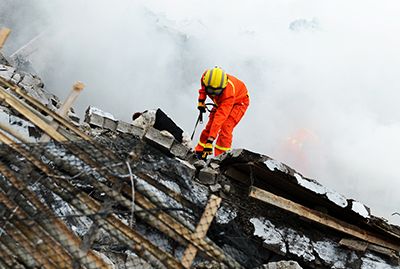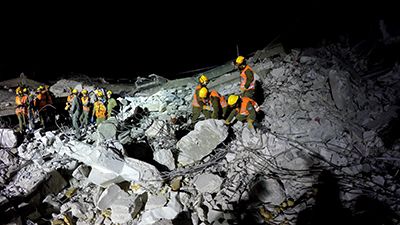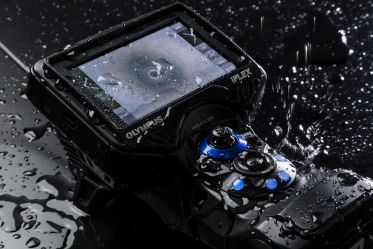Earthquakes, typhoons, building collapses—these are just some of the extreme situations that search and rescue (SAR) workers regularly face. Hindered by harsh weather, dust, darkness, and
Videoscopes that are well-suited for SAR operations need to have certain features to truly be of service. Here are 5 of the most important.
1. Dependable in harsh weather or working conditions
Severe conditions are inherent in search and rescue operations. To withstand storms or dust and debris filled air, videoscopes must be dustproof and water resistant. It also helps if they’re manufactured to pass the U.S. Department of Defense's ruggedness testing (MIL-STD) so that they should be able to withstand the occasional drop or jostle.
2. Lightweight and easy to carrySAR operations are inherently long and arduous, and rescuers may have to tread carefully through rubble or debris. A videoscope needs to be small, lightweight, and highly mobile to help reduce the physical burden on rescuers. Since rescuers will usually be wearing protective equipment, it’s also important that all the controls, including articulation, can be easily operated by someone with gloves on. |
3. Lights up big spacesVideoscopes need powerful light sources to provide the brightness required to search for victims in large, dark spaces. However, the light source’s brightness must be balanced against the power requirements to help ensure that the battery doesn’t get drained too quickly. |
4. See large areas with a wide-angle lens
The videoscope’s insertion tube should have a high-quality, wide-angle lens that provides a clear view of a large area, and the images should be displayed on the screen with uniform brightness and no distortion.
5. Stream inspection images in real time to other rescuers
It’s helpful for search teams to be able to share live videoscope images captured on-site with support personnel working off-site. Wireless connectivity enables SAR teams to better collaborate, helping make the search and rescue operations more efficient.
Finding the Right Videoscope
Finding a videoscope that offers high portability, ruggedness, bright lighting, picture clarity, and streaming in one package is difficult. Typically, the more portable the videoscope, the fewer features it has. This is one of the reasons that the IPLEX® G Lite videoscope is an indispensable tool in disaster zones. It’s IP65 rated dustproof and water resistant, has a powerful LED light source that automatically adjusts its intensity to conserve battery power, has a wide-angle lens with clear images, and has, with an optional adaptor, wireless streaming capabilities. And it only weighs 2.5 pounds (1.15 kg). This combination of features and portability enable it to facilitate the work of rescuers, assisting them in the discovery of survivors and helping bring a positive conclusion to SAR operations. |
Related Content
Video: IPLEX G Lite: Security Application
IPLEX G Lite—The Portable, Powerful Videoscope
Get In Touch




